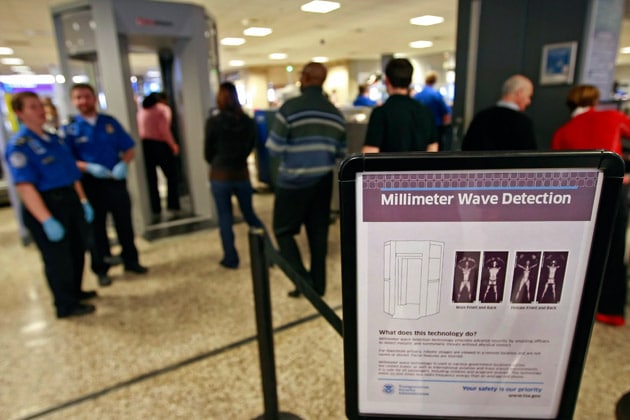France and Germany have decided to forgo the millimeter-wave scanners because of false alarms triggered by folds in clothing, buttons and even sweat. In Germany, the false positive rate was 54 percent, meaning that every other person who went through the scanner had to undergo at least a limited pat-down that found nothing. For the millimeter-wave machines, a complicating factor is new privacy software that was installed in many countries after a public outcry over the scanners’ graphic images. The software automates detection and no longer creates an image of a passenger’s body. While false alarms were reported before automation when human screeners interpreted images, the software appears to have made the problem worse. The machines do not save images or data, which could be used to teach the software how to distinguish real threats from false ones. The problem of false alarms comes down to fundamental physics. Millimeter waves penetrate clothing and reflect off objects. But because of their frequency, millimeter waves also reflect off water, which can cause the scanner to mistake sweat for a potentially dangerous object. In addition, millimeter waves penetrate clothing materials differently, and layers of clothing can create a barrier, triggering a false alarm.Learn more from ProPublica.
New Airport Body Scanner Software Increases False Alarms






